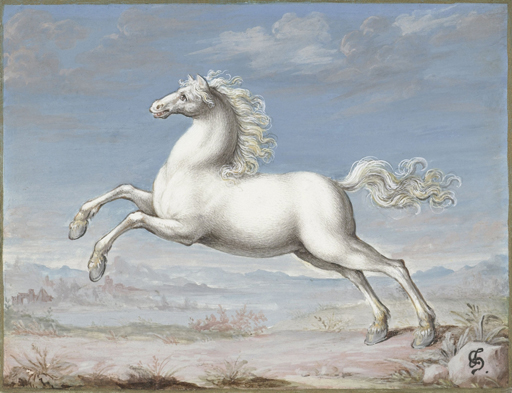1.1 Wind eggs and the uterine mole
Aristotle described a well-known phenomenon, the ‘wind egg’. This is when a female bird lays an egg with no yolk, and it was believed that this happened without any copulation. For Aristotle, the fact that wind eggs went bad suggested that what was in them was in some way alive, so that they contained at least a potential ‘soul’. A wind egg was therefore ‘incomplete’, and in Week 6 you will consider further how this idea of ‘incompleteness’ was also applied to people with disabilities.
Another belief around the wind was that mares could be made pregnant by the west wind. Many ancient sources on the natural world and on agriculture repeated this story; for example, Pliny the Elder described how, in Spain:
mares when a west wind is blowing stand facing towards it and conceive the breath of life and … this produces a foal, and this is the way to breed a very swift colt, but it does not live more than three years.
In some versions of this story, the mares were feeling lust but there were no stallions available. The mares deliberately lifted their tails and turned round so that the west wind could satisfy their desire. Some writers told similar stories about sheep and combined normal conception with the wind’s responsibility for the sex of the lamb. The second century writer Aelian wrote in his On the Characteristics of Animals (2.48) that sheep who were being impregnated by a ram would conceive male lambs if there was a north wind and female lambs if there was a south wind. In the sixteenth century, Joachim Camerarius picked up this idea of the power of the wind when he was wondering how pollen moved from one flower to another.
Could women also be impregnated by the west wind? No, but a similarly odd condition was thought to affect them. Sometimes women were thought to produce a ‘uterine mole’, a fleshy mass which was thought to result from menstrual blood acting without the male seed to shape it into a baby. This was not only something believed by medical writers. Here is philosopher and author Plutarch, who died in the early second century CE:
It is said that no woman ever produced a child without the co-operation of a man, yet there are misshapen, fleshlike, uterine growths originating in some infection, which develop of themselves and acquire firmness and solidity, and are commonly called ‘moles’. Great care must be taken that this sort of thing does not take place in women’s minds. For if they do not receive the seed of good doctrines and share with their husbands in intellectual advancement, they, left to themselves, conceive many untoward ideas and low designs and emotions.
Here, Plutarch uses common knowledge of the mole to argue against women’s minds being left to come up with ideas on their own.
The mole could also be seen in terms of imbalance: if there was too much blood from the woman’s body, it could overwhelm the male seed. Symptoms were difficult to distinguish from true pregnancy, but the main difference was that the woman wouldn’t feel the mole moving. Male foetuses were normally thought to move after three months, female after four, according to a Hippocratic treatise; or males after 40 days, females after 90 days according to Aristotle. The ‘mole’ was named from the ancient Greek word for a millstone, which was heavy and difficult to move.

